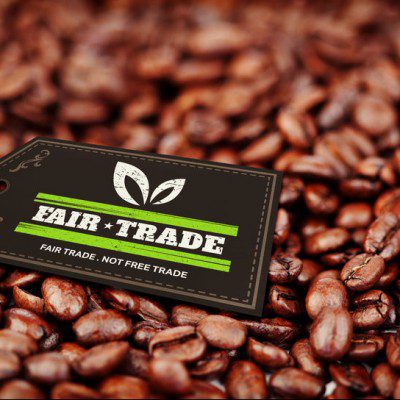
Over 40 years ago the first food product, coffee, became a fairly traded commodity. In 1973, a Dutch company called Fair Trade Original, imported the first fairly traded coffee from Guatemalan farmers. Today there are over 4,500 fair trade products on the market.1 Sugar, cocoa, and vanilla, essential ingredients in baked goods, are available as fair trade ingredients. Do consumers notice when their favorite bakery opts to choose fair trade ingredients? Studies have shown consumers selecting self-indulgent treats such as chocolate or baked goods are willing to splurge on fair trade certified goods.2
Fair trade is a global movement seeking better prices, decent working conditions and fair terms of trade for farmers and workers.1 Fair trade does not define the quality of an ingredient rather, it focuses on the quality of life for those closest to the production and growing of the ingredient. Since the inception of fair trade we have seen household poverty decreased for farmers, ability for children of farmers to attend schools, data suggests as well a positive correlation between participation in trainings and the implementation of good agricultural practices (GAP).1
The key objectives of fair trade are to:
- Ensure that producers receive prices that cover their average costs of sustainable production3
- Provide an additional Fairtrade Premium which can be invested in projects that enhance social, economic and environmental development3
- Enable pre-financing for producers who require it3
- Facilitate long-term trading partnerships and enable greater producer control over the trading process3
- Set clear core and development criteria to ensure that the conditions of production and trade of all Fairtrade certified products are socially, economically fair and environmentally responsible3
Baking with fair trade ingredients
Bakers have fair trade ingredient options such as chocolate, coconut products, coffee, extracts and flavorings, quinoa, herbs and spices, palm oil, shea butter, bananas, sweeteners, and tea.4 Bakers who wish to use the fair trade label will go through a third-party certification process much like organic certification. Baked goods being composed of several ingredients would qualify for fair trade ingredient certified labeling if more than 20% of your ingredients measured by weight without water or salt are certified fair trade.5
For example, if a brownie contains 11% Fair Trade Certified cocoa powder and 20% Fair Trade Certified sugar, the following labels can be used:
- “Fair Trade Certified™ Ingredients” label
- “Fair Trade Certified™ Sugar” label (highest % Fair Trade Certified ingredient)
- “Fair Trade Certified™ Cocoa” label (commonly associated with product).5
In the age of corporate social responsibility celebrating, World Fair trade Day is a benchmark for the food industry. We impact the global food supply chain each time we choose to purchase ethically sourced ingredients. Consumers are increasingly interested in environmental and social criteria when buying food products.2 Choosing fair trade ingredients can make every purchase matter from consumer to farmer.
References
- “Monitoring the Scope and Benefits of Fairtrade: Impact Report 2016.” Fairtrade Annual Report. Fairtrade International, 11 Apr. 2017. https://monitoringreport2016.fairtrade.net/en/. Accessed 01 May 2017.
- Rousseau, Sandra. “The role of organic and fair trade labels when choosing chocolate.” Food Quality and Preference 44 (2015): 92-100.
- “Aims of Fairtrade Standards.” Fairtrade International (FLO): Aims of Fairtrade Standards. www.fairtrade.net/standards/aims-of-fairtrade-standards.html. Accessed 08 May 2017.
- “Fair Trade USA.” Ingredients Database | Fair Trade USA. www.fairtradeusa.org/certification/ingredients. Accessed 01 May 2017.
- “Multiple Ingredients Product Policy.” Fair Trade USA. www.fairtradeusa.org/certification/producers/ingredients. Accessed 01 May 2017.

